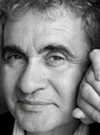
|
Bernardo
ATXAGA
Euskaltzaindia, Basque Country, Spain
|
|
Graduated in Economics at the University of the Basque Country and is a member of Euskaltzaindia, the Royal Academy of the Basque Language. Atxaga is well known internationally and widely acclaimed as one of the main writers in euskara, the Basque language, of all times. In fact, he is the most widely translated writer in the Basque language, and the one who has been awarded the most prizes. The list of awards he has received include, among others, three Euskadi Prizes (1989, 1997, 1999), the Spanish Fiction Award (1989), the Paris Milepages (1991), the Atlantic Pyrenees Three Crowns Award (1995), the Eusko Ikaskuntza Prize (2002), the Cesare Pavese Award for Poetry (2003), both the Mondello and the Grinzane Cavour awards in the same year (2008) and the Spanish Critics’ Prizes in 1978, 1985, 1988, 1993 and 2003. He regularly lectures on university programmes around the world and appears as an essential author on lists of 21st century writers. In 1999, the British newspaper The Observer had Atxaga on its “21 Top Writers” list.
|
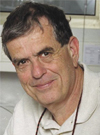
|
Aaron
CIECHANOVER
Technion, Haifa, Israel
|
|
was born in Haifa, Israel. He is a Distinguished Research Professor in the Technion - Israel Institute of Technology in Haifa. He received his M.Sc. (1971) and M.D. (1975) from the Hebrew University in Jerusalem, and his D.Sc. (1982) from the Technion. There, as a graduate student with Dr. Avram Hershko and in collaboration with Dr. Irwin A. Rose from the Fox Chase Cancer Center in Philadelphia, USA, they discovered that covalent attachment of ubiquitin to a target protein signals it for degradation. They deciphered the mechanism of conjugation, described the general proteolytic functions of the system, and proposed a model according to which this modification serves as a recognition signal for a specific downstream protease. As a post doctoral fellow with Dr. Harvey Lodish at the M.I.T., he continued his studies on the ubiquitin system and made additional important discoveries. Along the years it has become clear that ubiquitin-mediated proteolysis plays major roles in numerous cellular processes, and aberrations in the system underlie the pathogenetic mechanisms of many diseases, among them certain malignancies and neurodegenerative disorders. Consequently, the system has become an important platform for drug development. Among the numerous prizes Ciechanover received are the 2000 Albert Lasker Award, the 2003 Israel Prize, and the 2004 Nobel Prize (Chemistry; shared with Drs. Hershko and Rose). Among many distinguished academies, Ciechanover is member of the Israeli National Academy of Sciences and Humanities, the Pontifical Academy of Sciences of the Vatican, the American Academy of Arts and Sciences (Foreign Fellow), the National Academy of Sciences of the USA (Foreign Associate), and the Institute of Medicine of the National Academy of Sciences of the USA (Foreign Associate).
|
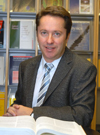
|
Juan Ignacio
CIRAC
Max Planck Institute of Quantum Optics, Garching, Germany
|
| Born in Manresa, Spain. In 1988, he graduated in Theoretical Physics from the Complutense University, Madrid, and gained his PhD in 1991. He is a member of the Max Planck Society since 2001, the year when he was appointed director of the Max Planck Institute of Quantum Optics (Garching, Germany). As an expert in quantum computation and its application in the field of information, the focus of his research work is the quantum theory of information. His theories propose that quantum computers will bring a new revolution to the field of information, as it will lead to more efficient communication and far greater security in both data processing and bank transfers.
He is a corresponding member of both the Spanish and the Austrian academies of sciences, as well as of the American Physical Society. Cirac?s work has obtained great many awards including the Felix Kuschenitz Prize at the Austrian Academy of Sciences in 2001, the Quantum Electronics from the European Science Foundation in 2005, the Prince of Asturias Prize for Scientific and Technical Research in 2006, the Frontiers of Knowledge and Culture Award for basic science given by the BBVA Foundation in 2008 and, most recently, the 2010 Franklin Medal.
|

|
Claude
COHEN-TANNOUDJI
École Normale Supérieure, Paris, France
|
| French physicist born in Constantine (Algeria), he graduated in Physics and received in 1962 his PhD from the École Normale Supérieure (ENS) in Paris.
In 1960, he joined the Centre National de la Recherche Scientifique (CNRS), a connection he maintained until 1964 where he was appointed Professor at the University of Paris. In 1973, he was elected Professor of atomic and molecular physics at the Collège de France in Paris, a position that he held for many years. His teaching experience led him to publish several textbooks, which are well appreciated by undergraduate and graduate physics students.
He pioneered the research into the various mechanisms that can be used to slow down, cool and trap atoms with a laser beam. Cohen-Tannoudji and his team, were among the first to cool atoms to very low temperatures, lower than one millionth of a degree above absolute zero.
The techniques designed by Cohen - Tannoudji and other scientists have resulted in various specific applications, such as more accurate atomic clocks and more precise atomic interferometers and gyrometers to measure the force of gravity and a rotation speed. These techniques have been also essential for producing new states of matter like Bose Einstein condensates. He received, with Steven Chu and William Phillips, the 1997 Nobel Prize in Physics for the development of methods to cool and trap atoms with laser light.
|
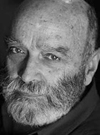
|
Luis
DE PABLO
Composer
|
|
Without doubt, one of the most prominent figures of avant-garde Spanish music. He is a member of the so-called Generation of 1951, which brought the fresh new musical trends of Europe to the Spanish music scene during the second half of the 20th century. A self-taught musician, he started playing piano at the age of eight and began composing when only thirteen.
In Paris, he studied composition with the renowned teacher Max Deutsch, who in turn studied under Arnold Schönberg, a pioneer of atonal composition. In 1958 he formed the Nueva Música group with Ramón Barce, and the following year attended the Darmstadt summer courses, one of the centres for cutting edge music in Europe.
His large body of work, which contains over 150 pieces, covers all musical genres, ranging from opera and orchestral music to electronic music and film scores, and is now studied at some of the world’s most prestigious music schools, such as Paris, Madrid, Ueno Gakuen (Tokyo), Instituto Di Tella (Buenos Aires), Santa Cecilia Academy (Rome), the Elisabeth School of Music (Hiroshima) and UCLA (Los Angeles).
He has been invested as a Doctor Honoris Causa by the University of Madrid (1996), appointed a member of the Fine Arts Academy in Madrid, of Santa Cecilia Academy in Rome and awarded the French Order as an Officer of the Arts and Humanities. His long list of prizes includes, among others, the Honegger Award (2003, Paris) for his works as a whole, the Pierre de Monaco Prize (2004), Guerrero (2006) and Tomás Luis de Victoria (2009).
|
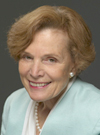
|
Sylvia
A. EARLE
National Geographic Society, EE.UU.
|
|
Born in Gibbytown, New Jersey, USA. She has a B.S. degree from St. Petersburg College and Florida State University, and she holds a M.S. and PhD. from Duke University, and 19 honorary doctorates. She is an oceanographer, explorer, author, and lecturer, Explorer in Residence of the National Geographic Society (NGS), Leader of the NGS Sustainable Seas Expeditions, Council Chair for the Harte Research Institute, Founder of the Deep Search Foundation, and formerly the Chief Scientist of NOAA (National Oceanic and Atmospheric Administration). Founder of three companies, she serves on various corporate and non-profit boards. Her research concerns marine ecosystems with special reference to exploration and the development and use of new technologies for access and effective operations in the deep sea and other remote environments.
Named as Time Magazine’s first Hero for the Planet and a Living Legend by the Library of Congress, she has more than 100 national and international awards. Honors include the Netherlands Order of the Golden Ark, inclusion in the National Women's Hall of Fame and the American Academy of Achievement, and medals from the Explorers Club, the Philadelphia Academy of Sciences, the Lindbergh Foundation, the National Wildlife Federation, Sigma Xi, Barnard College, the New England Aquarium, the Seattle Aquarium, the Society of Women Geographers, and the National Parks Conservation Association.
|

|
Richard
ERNST
Eidgenössische Technische Hochshule - ETH, Zurich, Suiza
|
| born in Winterthur, Switzerland. He studied at and served on the faculty of the Eidgenössische Technische Hochschule (Federal Institute of Technology) in Zürich, Switzerland from which he is now retired.
Ernst received both his diploma in chemistry (1957) and his Ph.D. in physical chemistry (1962) from the Federal Institute of Technology (ETH) in Zürich. From 1963 to 1968 he worked as a research chemist in Palo Alto, Calif. In 1968 he returned to Switzerland to teach at ETH. He was made assistant professor in 1970 and full professor in 1976. He is also Honorary Doctor of the Technical University of Munich and University of Zurich.
Ernst was awarded the Nobel Prize in Chemistry in 1991 for his contributions towards the development of Fourier Transform nuclear magnetic resonance spectroscopy while at Varian Associates, Palo Alto and the subsequent development of multi-dimensional NMR techniques. These underpin applications of NMR both to chemistry (NMR spectroscopy) and to medicine (MRI). He also received Louisa Gross Horwitz Prize in 1991.
Richard Ernst is member of the World Knowledge Dialogue Scientific Board. He is a foreign fellow of Bangladesh Academy of Sciences. The 2009 Bel Air Film Festival featured the world premiere of a documentary film on Ernst Science Plus Dharma Equals Social Responsibility.
|
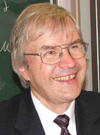
|
Theodor
HÄNSCH
Max Planck Institut für Quantenoptik, Munich, Alemania
|
| Born in Heidelberg, Germany. Hänsch obtained his diploma and PhD from the Ruprecht-Karls-Universität in Heidelberg in 1969. He subsequently worked as a professor at Stanford University in California from 1975. In 1986, Hänsch returned to Germany, both as director of the Max-Planck-Institut für Quantenoptik and as Professor of experimental physics and laser spectroscopy at the Ludwig-Maximilians University in Munich.
In 1970, he invented a new type of laser which generated light pulses with an extremely high spectral resolution. Using this device, he managed to measure the transition frequency of the Balmer line of atomic hydrogen with a much higher precision than any previous techniques. In the late 90s, he developed with his team a new refined method to measure the frequency of laser light even more accurately, using a device called the optical frequency comb generator. He then used this new technique to measure the Lyman line of atomic hydrogen to the extraordinary accuracy of one part in one hundred trillion. With this precision we can now detect changes in the fundamental physical constants of the universe.
He received the Nobel Prize in Physics in 2005 for his contributions in the development of laser-based spectroscopy.
|
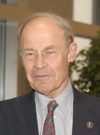
|
Dudley
HERSCHBACH
Harvard University, Cambridge - MA, EE.UU.
|
| Born in San Jose (California). He received his B.S. degree in Mathematics (1954) and M.S. in Chemistry (1955) at Stanford University, followed by an A.M. degree in Physics (1956) and Ph.D. in Chemical Physics (1958) at Harvard. He started lecturing in physics and chemistry at Berkeley University in 1958. In 1963 he returned to Harvard as Professor of Chemistry where he became Baird Professor of Science (1976-2003). He is now a Research Professor (Emeritus) at Harvard. He also joined the Texas University faculty in 2005 as a part-time Professor of Physics.
Professor Herschbach is a member of many academies and institutions and has received numerous international honors and awards. Along with his collaborator Yuan T. Lee and the Canadian chemist John C. Polanyi, he received in 1986 the Nobel Prize in Chemistry, for their contributions concerning the dynamics of elementary chemical processes.
Herschbach is a passionate advocate of science education and science for the general public. He frequently lectures students of all ages, imbuing them with his infectious enthusiasm for science and discovery. He serves as Chair of the Board of Trustees of Science Service, which publishes Science News and conducts the Intel Science Talent Search and the Intel International Science and Engineering Fair. Herschbach also lent his voice for The Simpsons? Treehouse of Horror XIV episode, where he presents the Nobel Prize in Physics to Professor Frink.
|
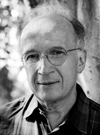
|
Roald
HOFFMANN
Cornell University, Ithaca - NY, EE.UU.
|
Hoffmann was born in Złoczów, Poland (now Ukraine). Having survived the war, he
moved to the U. S. in 1949, and studied chemistry at Columbia and
Harvard Universities (Ph.D. 1962). Since 1965 he is at Cornell
University.
“Applied theoretical chemistry" is the way Roald Hoffmann likes to characterize the particular blend of computations stimulated by experiment and the construction of generalized models, of frameworks for understanding, that is his contribution to chemistry. In more than 500 scientific articles and two books he has taught the chemical community new and productive ways to look at the geometry and reactivity of molecules, from organic through inorganic to infinitely extended structures. His work continues, now close to condensed matter physics. The pedagogical perspective is very important in his work.
In 1981 he shared the Nobel Prize in Chemistry with Kenichi Fukui, for his theoretical work on the course of chemical reactions.
As a writer, Hoffmann has carved out a land between science, poetry, and philosophy, through many essays, four non-fiction books (three translated into Spanish), five collections of poetry (including the bilingual Spanish-English Catalista, published by Huerga & Fierro), and three plays.
|
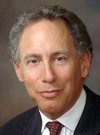
|
Robert
S. LANGER
MIT, Cambridge MA, EE.UU.
|
| Born in Albany, New York. He received his Bachelor’s Degree from Cornell University in 1970 and his Sc.D. from the Massachusetts Institute of Technology in 1974, both in Chemical Engineering. He is the David H. Koch Institute Professor at MIT. He served as a member of the United States Food and Drug Administration’s SCIENCE Board, the FDA’s highest advisory board, from 1995 -- 2002 and as its Chairman from 1999-2002.
He is considered as the father of smart drug release, following his development of innovative biomimetic materials, such as polymers, nanoparticles or chips, which enable a controlled distribution of drugs in the human body. His research has allowed for the successful treatment of various types of cancer, such as prostate and brain. He is also one of the pioneers of tissue engineering, leading to controlled reconstruction and growth of tissues and organs by means of new biodegradable materials used as scaffolds.
Dr. Langer has received over 170 major awards including the 2006 United States National Medal of Science; the Charles Stark Draper Prize, considered the equivalent of the Nobel Prize for engineers and the 2008 Millennium Prize, the world’s largest technology prize. Among numerous other awards Langer has received are the Dickson Prize for Science (2002), the Max Planck Research Award (2008) and the Prince of Asturias Award for Technical and Scientific Research (2008).
|
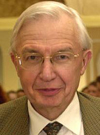
|
Jean-Marie
LEHN
Université de Strasbourg, Estrasburgo, Francia
|
| born in Rosheim, France. He studied chemistry at the University of Strasbourg, where he gained his PhD in 1963. Following his post doctorate studies, he spent a year at Harvard University working with Professor Robert Burns Woodward on the chemical synthesis of vitamin B12. He was appointed Professor of Chemistry at Strasbourg University in 1970, and joined the faculty at the prestigious Collège de France, Paris, in 1980.
He shared the Nobel Prize in Chemistry in 1987 with Pedersen and Cram for his studies on the chemical basis of “molecular recognition” (i.e. the way in which a receptor molecule recognizes and selectively binds a substrate), which also plays a fundamental role in biological processes.
Over the years his work led him to the definition of a new field of chemistry, which he has proposed calling “supramolecular chemistry” as it deals with the complex entities formed by the association of two or more chemical species held together by non-covalent intermolecular forces, whereas molecular chemistry concerns the entities constructed from atoms linked by covalent bonds. Subsequently, the area developed into the chemistry of "self-organization" processes and more recently towards "adaptive chemistry".
Lehn is a member of many academies and institutions and has received numerous international honours and awards.
|
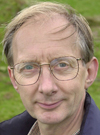
|
Sir John
PENDRY
Imperial College London, Reino Unido
|
|
Born in England.
He has been working at the Blackett Laboratory, Imperial College
London (UK) since 1981. He began his career in the Cavendish
Laboratory at the University of Cambridge, followed by six years at
the Daresbury Laboratory of the Science and Technology Facilities
Council (UK), where he headed the theory group. In collaboration with
the Marconi Company, he designed a series of completely novel
artificial materials, or “metamaterials”, with properties not found in
nature. Successively metamaterials with negative electrical
permittivity, then with negative magnetic permeability were designed
and constructed This project culminated in the proposal for a 'perfect
lens' whose resolution is unlimited by wavelength. He is popularly
known for his research into refractive indexes and creation of the
first practical "Invisibility Cloak".
John Pendry was head of the physics department at Imperial College
London and principal of the Faculty of Physical Sciences. The long
list of awards he has received includes, among others, his post as
fellow of the Royal Society (1984), honorary fellow of Downing College
at Cambridge University, the Dirac prize (1996), the Royal Medal of the
Royal Society (2006), as well as being knighted for his services to
science (2004).
|
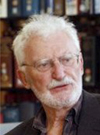
|
Heinrich
ROHRER
IBM, Zurich, Suiza
|
born in Switzerland, received his PhD in experimental physics in 1960 from the Swiss Federal Institute of Technology (ETH-Zurich) with a thesis on
superconductivity. After a two-year post-doctorate at Rutgers University, New Jersey (USA), he joined the IBM Zurich Research Laboratory in 1963 as a research staff member. In 1974/75 he spent a sabbatical at the University of California, Santa Barbara. His research interests included, in chronological order, Kondo systems, phase transitions, multicritical phenomena, scanning tunnelling microscopy, and, most recently, nanomechanics. He retired from IBM in 1997.
For the invention of the scanning tunnelling microscope, Gerd Binnig and Heinrich Rohrer were co-recipient of both the King Faisal Prize and the Hewlett Packard Europhysics
Prize in 1984, of the Nobel Prize in Physics of 1986, and of the Cresson Medal of the Franklin Institute in Philadelphia (USA) in 1987. He is a member or honorary member of various academies and professional societies. He has also received honorary degrees from several universities.
|
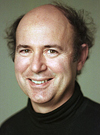
|
Frank
WILCZEK
MIT, Cambridge - MA, EEUU
|
| born in Mineola, New Cork. He graduated in mathematics in 1970 and received his PhD in physics from Princeton University. He later joined the faculty at the Institute for Advanced Study in Princeton and the Institute for Theoretical Physics at the University of California, Santa Barbara. He currently is the Herman Feshbach Professor of Physics at the MIT Theoretical Physics Centre.
He was awarded the Lorentz Medal in 2002 and the 2003 Prize for high energy & particle physics granted by the European Physical Society. He was co-recipient of the 2004 Nobel Prize in Physics, together with Gross and H. David Politzer, for the discovery of asymptotic freedom in the theory of the strong interaction, a fundamental breakthrough which allowed for the development of quantum chromodynamics. His findings have come from an unusually wide range of areas within physics, such as condensed matter physics, astrophysics and particle physics. In 2005, he obtained the King Faisal Prize for Science.
He has also written a number of books for lay readers and contributes regularly to journals like Science Today or Science, where he explains to the general public those concepts that fall at the frontiers of physics. This part of his work has been rewarded with two appearances in Best American Science Writing (2003, 2005) and with the Lilienfeld Prize given by the American Physical Society.
|
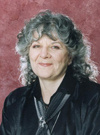
|
Ada
YONATH
Weizmann Institute of Science, Rehovot, Israel
|
| born in Jerusalem, Israel. After completing her PhD studies at the MIT and Carnegie Mellon University, she established the first protein-crystallography laboratory in Israel. She is currently director of the Helen & Milton A. Kimmelman Centre for Biomolecular Structure at the Weizmann Institute.
Ada Yonath is a renowned crystallographer, better known for her pioneering work with the structure of ribosomes. She successfully established the use of cryo-bio-crystallography, a new technique for crystallographic studies of biological structures. Yonath’s research focussed on the mechanisms underlying protein biosynthesis. Her studies led to the discovery of the ribosomal tunnel and revealed the dynamics involved at the different steps of protein synthesis. In parallel with her colleagues Venkatraman Ramakrishnan and Thomas A. Steitz, she applied x-ray crystallography to decipher the structural basis for antibiotic selectivity, showing how it plays a fundamental role in both clinical usefulness and therapeutical effectiveness, thus paving the way for future structure-based drug design.
She shared the 2009 Nobel Prize in Chemistry with Venkatraman Ramakrishnan and Thomas A. Steitz for her studies on ribosome structure and functions. She is the first Israeli woman to become a Nobel laureate and the only one to obtain the Nobel for Chemistry in the last 45 years.
|
